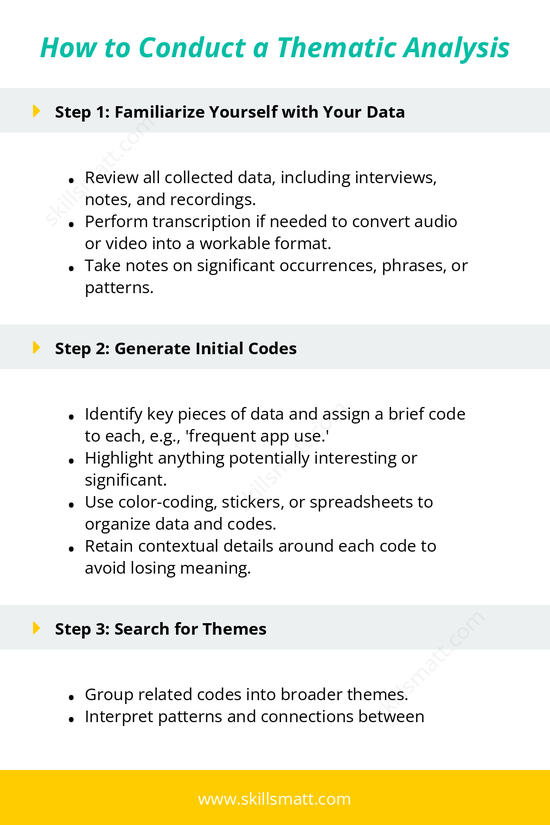How to Conduct a Thematic Analysis
Thematic analysis is a flexible and widely used method for analyzing qualitative data. Follow these steps to conduct an effective thematic analysis:
Step 1: Familiarize Yourself with Your Data
- Review all collected data, including interviews, notes, and recordings.
- Perform transcription if needed to convert audio or video into a workable format.
- Take notes on significant occurrences, phrases, or patterns.
Step 2: Generate Initial Codes
- Identify key pieces of data and assign a brief code to each, e.g., 'frequent app use.'
- Highlight anything potentially interesting or significant.
- Use color-coding, stickers, or spreadsheets to organize data and codes.
- Retain contextual details around each code to avoid losing meaning.
Step 3: Search for Themes
- Group related codes into broader themes.
- Interpret patterns and connections between codes.
- Refine themes by ensuring they accurately represent the data.
Step 4: Review Themes
- Check themes against the dataset to confirm relevance and consistency.
- Discard or merge weak or overlapping themes.
- Ensure themes provide meaningful insights into the research question.
Step 5: Define and Name Themes
- Clearly define the scope and essence of each theme.
- Assign concise, descriptive names to make themes easily understandable.
- Relate themes back to the overarching research objectives.
Step 6: Write the Report
- Present themes in a logical, coherent narrative.
- Include representative quotes or data extracts to illustrate themes.
- Ensure the analysis provides actionable insights and answers key questions.
Following these steps will guide you in conducting a thorough thematic analysis and presenting your findings effectively.


